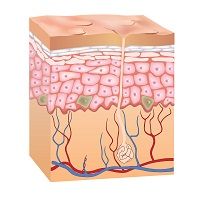Article
Chemowraps of Topical 5-FU Effective for Treating Actinic Keratosis in Small Pilot Study
Author(s):
A pilot study found very promising results for treating actinic keratosis with an off-label usage of topical 5- fluorouracil (5-FU).

A pilot study in Dermatology and Therapy found very promising results for treating actinic keratosis with an off-label usage of topical 5- fluorouracil (5-FU). While the treatment has long been known to be effective for healing lesions, its use is limited by the surface area of skin to be treated of 500 cm2. The researchers tested the effectiveness and tolerability of Topical 5-FU under occlusion (chemowraps) for large areas of sun-damaged skin on the arms or legs.
The potential application goes beyond benefits to patients’ appearance. Sun-damaged skin may exhibit “field cancerization”—a wide area of skin with dysplastic epithelium and a high risk of multiple primary cancers arising separately from a large background area of abnormal cells. Yet, treating large surface areas is challenging, and in some cases is painful and expensive. Current treatments, including cryotherapy, CO2 laser resurfacing and chemical peels, and colchicine, among others.
This was a small pilot study featuring only 5 patients, and 2 of the patients did not complete treatment due to complications not directly attributable to the study. But the results are consistent with other studies showing promise for this treatment, including a 2013 study in the Australasian Journal of Dermatology.
In the current pilot study, topical 5-FU was applied to sun-damaged limbs under occlusion, and reviewed weekly for response, and local or systemic side effects. Treatment duration was 12—14 weeks. Clinical photography was undertaken prior to, during, and after treatment to document response. Dermatologists reviewed all the patients and documented effectiveness by counting actinic keratosis lesions. Potential side effects of toxicity that were monitored for included neutropenia, mucositis, and diarrhea; however, no side effects were experienced.
“All patients who completed the regimen showed objective evidence of improvement, with a decrease in the numbers of actinic keratoses or a reduction in the size of lesions,” the study authors note. “It is interesting to speculate that treatment under occlusion with topical 5-FU would be more successful than the standard regimen. Potential advantages of chemowraps compared to some of the other topical treatments include the ability to treat large surface areas and the lack of pain or discomfort so far.”
The study authors conclude that further research is needed. Because the majority of patients with large areas of sun-damaged skin are elderly patients, consideration of co-morbidities is particularly crucial.





